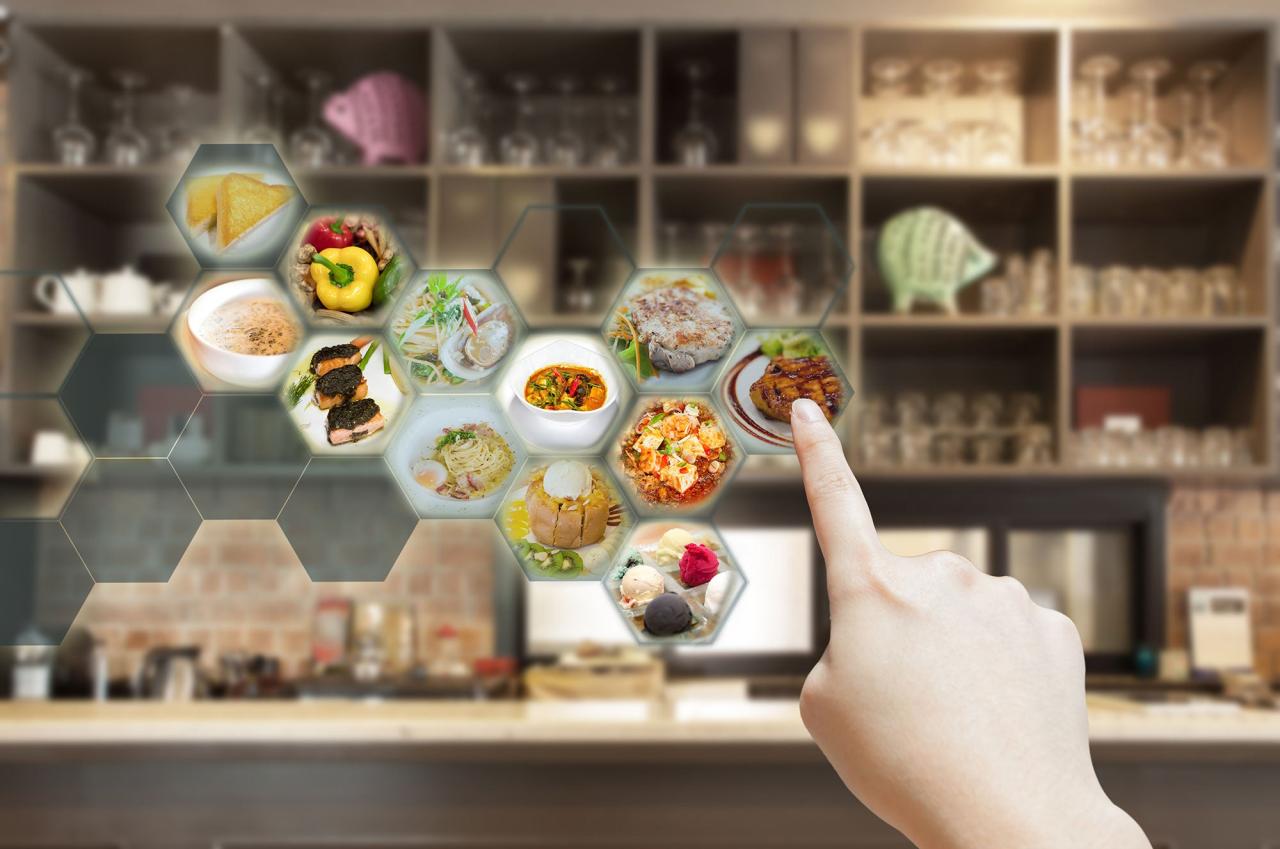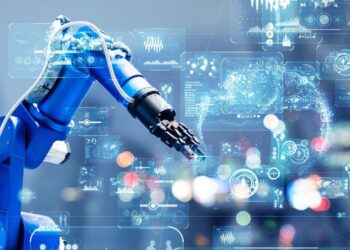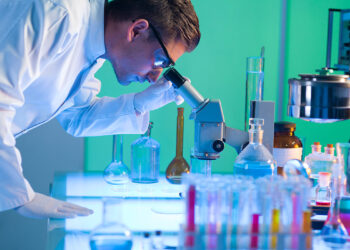The way we produce and consume food is at a pivotal moment. With a global population projected to reach nearly 10 billion by 2050, traditional agricultural methods are facing immense pressure. Climate change, resource scarcity, and evolving dietary preferences demand innovative approaches. The concept of future food solutions isn’t just about what we’ll eat, but how we’ll sustainably feed an ever-growing planet while ensuring nutritional security and environmental stewardship. This isn’t merely a theoretical exercise; it’s a critical mission to redefine our relationship with sustenance.
Why Future Food Matters Now

Our current food systems are incredibly resource-intensive and contribute significantly to environmental degradation. From vast land use and freshwater consumption to greenhouse gas emissions and biodiversity loss, the ecological footprint of conventional agriculture is substantial. Simultaneously, issues of food waste, unequal distribution, and nutritional deficiencies persist globally.
A. Population Growth and Demand:
* The United Nations predicts the world population will hit 9.7 billion by 2050. This surge translates directly into an escalating demand for food, requiring an estimated 50% increase in food production compared to 2012 levels.
* Meeting this demand through conventional means would necessitate expanding agricultural land, which often leads to deforestation and habitat destruction, further exacerbating environmental challenges.
* Ensuring equitable access to this increased food supply is also crucial, as food insecurity remains a major issue in many parts of the world, despite overall global food production potentially being sufficient.
B. Environmental Pressures:
* Climate Change: Agriculture is a significant contributor to greenhouse gas emissions, particularly methane from livestock and nitrous oxide from fertilizers. It’s also highly vulnerable to the impacts of climate change, such as extreme weather events, droughts, and floods, which directly threaten crop yields and livestock health.
* Resource Depletion: Conventional farming relies heavily on finite resources like fresh water and fertile land. Over-irrigation depletes aquifers, while soil degradation due to monoculture and overuse of chemicals reduces agricultural productivity over time.
* Biodiversity Loss: Expansion of agricultural land often comes at the expense of natural habitats, leading to a decline in biodiversity. Pesticide use can also harm beneficial insects and soil organisms, further disrupting ecological balance.
C. Health and Nutritional Challenges:
* Despite abundant food, many populations suffer from “hidden hunger” – a lack of essential vitamins and minerals. This is often due to diets heavily reliant on staple crops and limited access to diverse, nutrient-rich foods.
* The rise of diet-related non-communicable diseases (e.g., obesity, diabetes, heart disease) in many parts of the world highlights the need for healthier, more balanced food options and greater nutritional literacy.
* Concerns about food safety, including pesticide residues, antibiotic resistance from livestock, and foodborne illnesses, further underscore the need for more controlled and sustainable production methods.
D. Economic Vulnerabilities:
* Global food supply chains are complex and vulnerable to disruptions from geopolitical events, trade wars, and natural disasters. Reliance on distant food sources can lead to price volatility and supply shocks.
* Smallholder farmers, who produce a significant portion of the world’s food, often face economic insecurity due to market fluctuations, climate impacts, and lack of access to technology and resources.
* The high cost of inputs (fertilizers, pesticides, water) in conventional agriculture can make farming economically unsustainable for many, contributing to rural poverty.
Vertical Farming
One of the most promising avenues for future food production is vertical farming. This method involves growing crops in vertically stacked layers, often in controlled indoor environments. By optimizing light, temperature, humidity, and nutrients, vertical farms can achieve significantly higher yields per square foot compared to traditional field farming.
A. Principles of Vertical Farming:
* Stacked Layers: Plants are grown on shelves or racks, maximizing space utilization within a compact footprint. This contrasts sharply with the expansive land requirements of conventional agriculture.
* Controlled Environment Agriculture (CEA): Key environmental factors such as temperature, humidity, CO2 levels, and air circulation are precisely managed. This creates ideal growing conditions, minimizes pest and disease outbreaks, and reduces the need for pesticides.
* Hydroponics, Aeroponics, and Aquaponics: Instead of soil, plants are nourished using nutrient-rich water solutions.
* Hydroponics: Roots are submerged directly in the nutrient solution.
* Aeroponics: Roots are suspended in air and misted with nutrient solution, offering even greater water efficiency.
* Aquaponics: Combines aquaculture (raising fish) with hydroponics, where fish waste provides nutrients for the plants, creating a symbiotic ecosystem.
* LED Lighting: Energy-efficient LED lights are used to provide the specific light spectrums plants need for optimal growth, replacing sunlight. This allows for 24/7 growth cycles, leading to faster harvests.
B. Advantages of Vertical Farming:
* Reduced Land Use: Vertical farms can produce the same amount of food as conventional farms using a fraction of the land, making them ideal for urban areas or regions with limited arable land.
* Water Efficiency: Hydroponic and aeroponic systems recirculate water, reducing water consumption by up to 95% compared to traditional farming, a critical advantage in water-stressed regions.
* Year-Round Production: Unaffected by external weather conditions, vertical farms can grow crops continuously, ensuring a stable and predictable supply regardless of seasons or climate events.
* Reduced Transportation Costs and Emissions: Locating vertical farms near consumption centers (e.g., within cities) drastically cuts down on “food miles,” reducing transportation costs, fuel consumption, and associated carbon emissions.
* Elimination of Pesticides and Herbicides: The controlled environment largely eliminates pests and weeds, removing the need for chemical sprays and producing cleaner, safer food.
* Higher Yields and Faster Growth: Optimized conditions and continuous growth cycles lead to significantly higher yields per unit area and faster crop maturation.
C. Challenges and Future Outlook:
* Energy Consumption: While LEDs are efficient, the energy required for lighting, climate control, and water pumps can be substantial. Integrating renewable energy sources is crucial for sustainability.
* Initial Capital Costs: Setting up a vertical farm requires significant upfront investment in infrastructure, technology, and automation.
* Limited Crop Variety: Currently, leafy greens, herbs, and some berries are most common. Expanding to staple crops like grains or root vegetables is more challenging but actively being researched.
* Flavor and Texture: Some critics argue that certain vertically farmed produce may lack the same robust flavor or texture as field-grown varieties, though this is subjective and improving with technological advancements.
The future of vertical farming looks bright, with continued innovation in energy efficiency, automation (robotics and AI for planting, monitoring, harvesting), and expanding crop compatibility. As urban populations grow, vertical farms will play an increasingly vital role in localized food security.
Cultivated Meat
Cultivated meat, also known as cell-based meat, lab-grown meat, or cultured meat, represents a revolutionary approach to protein production. Instead of raising and slaughtering animals, meat is grown directly from animal cells in a controlled environment.
A. The Science Behind Cultivated Meat:
* Cell Sourcing: A small sample of cells (e.g., muscle stem cells) is taken from a living animal through a harmless biopsy. This is a one-time event, and the animal is not harmed.
* Cell Proliferation: These cells are then placed in a bioreactor (a large tank) and given a nutrient-rich growth medium. The cells naturally multiply and differentiate, much like they would inside an animal’s body.
* Scaffolding (Optional): For structured cuts of meat, cells might be grown on edible scaffolds to mimic muscle tissue architecture. For ground meat, a scaffold might not be necessary.
* Maturation: The cells develop into muscle and fat tissue, forming edible meat.
The process essentially replicates natural biological growth outside of an animal, using significantly fewer resources.
B. Environmental and Ethical Benefits:
* Reduced Land Use: Eliminates the need for vast tracts of land for grazing and growing feed crops. This frees up land for reforestation or other uses, potentially reversing deforestation trends.
* Lower Water Footprint: Cultivated meat production uses substantially less water compared to traditional livestock farming, which is a massive consumer of freshwater.
* Reduced Greenhouse Gas Emissions: Significantly lowers emissions of methane (from ruminants) and nitrous oxide (from manure and fertilizers), contributing to climate change mitigation.
* No Animal Slaughter: Addresses ethical concerns related to animal welfare, as it removes the need to raise and slaughter animals for food.
* Reduced Risk of Zoonotic Diseases: Growing meat in sterile, controlled environments drastically reduces the risk of foodborne illnesses and the emergence of zoonotic diseases.
* Antibiotic-Free Production: Eliminates the need for antibiotics in animal agriculture, thereby combating the growing global crisis of antibiotic resistance.
C. Challenges and Future Outlook:
* Cost-Effectiveness: Currently, production costs are high, but rapidly decreasing with scaling and technological advancements. The goal is to reach price parity with conventional meat.
* Scaling Production: Moving from small laboratory production to large-scale, industrial bioreactor facilities is a significant engineering challenge that requires substantial investment.
* Consumer Acceptance: Public perception and acceptance are key. Education about the technology and its benefits, along with appealing product taste and texture, are crucial for widespread adoption.
* Regulatory Approval: Gaining regulatory approval from food safety agencies globally is a complex and ongoing process, crucial for commercialization.
* Growth Medium Composition: Developing affordable, animal-free growth media is an area of active research to further enhance ethical and cost efficiency.
As technology progresses and production scales, cultivated meat has the potential to become a mainstream protein source, offering a sustainable and ethical alternative to conventional meat, thereby revolutionizing the protein industry.
Plant-Based Innovations

The surge in popularity of plant-based foods has moved far beyond simple vegetarianism. Driven by health, ethical, and environmental concerns, innovators are creating remarkably convincing alternatives to meat, dairy, and eggs, often with superior nutritional profiles.
A. Advanced Plant-Based Proteins:
* Next-Gen Meat Alternatives: Companies are using ingredients like pea protein, soy, wheat gluten, and fungi (mycoprotein) to create plant-based burgers, sausages, chicken, and even seafood that mimic the taste, texture, and cooking properties of their animal counterparts. Techniques like high-moisture extrusion are crucial here.
* Whole-Cut Mimicry: Beyond ground products, there’s a growing focus on creating plant-based whole cuts, like steaks or chicken breasts, with fibrous textures and marbling, pushing the boundaries of realism.
* Novel Protein Sources: Research is exploring proteins from algae, duckweed, and various legumes that offer high nutritional value and sustainable cultivation.
B. Dairy and Egg Alternatives:
* Milk Alternatives: A vast market now exists for plant-based milks derived from oats, almonds, soy, rice, coconut, and even potatoes, offering diverse flavors and functionalities for different uses (e.g., barista-style oat milk).
* Cheese Alternatives: Using ingredients like cashews, almonds, and coconut oil, innovators are creating plant-based cheeses that melt, stretch, and taste increasingly like dairy cheese, addressing a significant gap for many consumers.
* Egg Replacements: Plant-based egg alternatives, often made from mung bean protein or aquafaba (chickpea brine), are available for scrambling, baking, and even liquid egg substitutes, catering to both consumers and the food service industry.
C. Advantages and Impact:
* Environmental Benefits: Plant-based diets generally have a lower environmental footprint than animal-based diets, requiring less land, water, and generating fewer greenhouse gas emissions.
* Health Benefits: Many plant-based alternatives are lower in saturated fat and cholesterol, and higher in fiber, contributing to better cardiovascular health and overall well-being.
* Ethical Considerations: Appeals to consumers concerned about animal welfare in conventional farming.
* Accessibility and Versatility: Plant-based ingredients are generally widely available and can be incorporated into a vast array of cuisines and products, offering versatility in food development.
D. Challenges and Future Outlook:
* Taste and Texture Parity: While significant strides have been made, continuous improvement in taste, texture, and mouthfeel is crucial for wider consumer adoption, especially for more complex products like whole-cut meats.
* Nutritional Completeness: Ensuring that plant-based alternatives provide equivalent nutritional profiles to their animal counterparts, particularly in terms of essential amino acids and micronutrients like Vitamin B12 and iron, is an ongoing focus.
* Processing and Ingredients: Some plant-based products can be highly processed and contain numerous ingredients. The trend is moving towards cleaner labels and more minimally processed options.
* Pricing: While some plant-based options are becoming more competitive, others still command a premium price, which can be a barrier for some consumers.
The future of plant-based innovation will likely see continued refinement of existing products, exploration of novel plant sources, and a greater emphasis on whole foods and clean labels. This category is expected to remain a driving force in the transformation of our global diet.
Precision Fermentation
Precision fermentation is a groundbreaking technology that leverages microorganisms (like yeast, fungi, or bacteria) to produce specific functional ingredients, including proteins, fats, vitamins, and flavors, typically found in animal products. This process is distinct from traditional fermentation, which often produces bulk commodities like bread or beer.
A. How Precision Fermentation Works:
* Microbial Engineering: Microorganisms are engineered (often genetically, but not always) to act as “cellular factories.”
* Ingredient Encoding: The DNA sequence for a desired protein (e.g., whey protein, casein, heme) is inserted into the microbe.
* Fermentation Process: The engineered microbes are then grown in large fermentation tanks (bioreactors) and fed simple sugars. As they grow, they produce the target ingredient, which is then harvested and purified.
* Identical Output: The resulting protein or ingredient is molecularly identical to its animal-derived counterpart, but it’s produced without animals.
B. Applications in Food:
* Dairy Proteins (Casein and Whey): Companies are using precision fermentation to produce milk proteins identical to those in cow’s milk, allowing for the creation of animal-free dairy products (milk, cheese, yogurt, ice cream) that have the same taste, texture, and functionality as traditional dairy.
* Egg Proteins: Replicating egg proteins like ovalbumin enables the development of egg-free products for baking, meringues, and other uses.
* Heme Protein: Used in some plant-based meat alternatives (like the Impossible Burger) to provide a “meaty” flavor and color, enhancing the realism of the product.
* Fats and Oils: Producing specific fats, including those found in milk or meat, can improve the mouthfeel and flavor of plant-based or cultivated products.
* Enzymes and Vitamins: Precision fermentation is also used to produce enzymes (e.g., rennet for cheese production) and vitamins (e.g., Vitamin B12) more sustainably.
C. Advantages and Impact:
* Sustainability: Significantly lower environmental footprint compared to animal agriculture, requiring less land, water, and generating fewer emissions.
* Precision and Purity: Produces highly pure, consistent, and identical ingredients, free from animal hormones, antibiotics, or potential contaminants.
* Scalability: The process can be scaled efficiently using established fermentation infrastructure, similar to that used for brewing beer or producing pharmaceuticals.
* Ethical Considerations: Completely animal-free, addressing ethical concerns about animal welfare.
* Functional Properties: Allows for the production of ingredients with specific functional properties (e.g., melting, foaming, binding) that are difficult to replicate with plant-based alternatives alone.
D. Challenges and Future Outlook:
* Cost-Effectiveness: Scaling production and reducing costs remain key challenges, though advancements are rapidly bringing down prices.
* Consumer Understanding: Explaining precision fermentation to consumers and ensuring transparency will be important for gaining trust and acceptance.
* Regulatory Landscape: Navigating diverse and evolving regulatory frameworks in different countries is crucial for commercialization.
* Energy Intensity: While efficient in terms of land and water, the fermentation process can be energy-intensive, requiring sustainable energy sources for full environmental benefits.
Precision fermentation is poised to revolutionize the food ingredient industry, enabling the creation of novel food products with unparalleled functionality, sustainability, and ethical advantages, driving the development of the “animal-free” economy.
Food Waste Reduction and Circular Economy
Solving the future food puzzle isn’t just about producing more; it’s also about wasting less. Globally, an astonishing one-third of all food produced for human consumption is lost or wasted. This represents a massive squandering of resources (land, water, energy, labor) and a significant contributor to greenhouse gas emissions.
A. Strategies for Waste Reduction:
* Improved Cold Chains and Logistics: Enhancing refrigeration and transportation infrastructure, especially in developing countries, to minimize spoilage between farm and market.
* Smart Packaging: Developing packaging that extends shelf life, indicates spoilage accurately, and is easily recyclable or compostable.
* Consumer Education: Raising awareness among consumers about food storage, portion control, “best before” vs. “use by” dates, and creative ways to use leftovers.
* Technology for Prediction: Using AI and data analytics to predict food demand more accurately for retailers and restaurants, reducing overstocking.
* Upcycling “Ugly” Produce: Promoting the sale and use of cosmetically imperfect fruits and vegetables that are otherwise perfectly edible but often rejected by consumers or retailers.
* Food Donation and Redistribution: Creating efficient systems to divert edible surplus food from businesses to those in need.
B. Circular Economy in Food Systems:
* Valorizing Food Waste: Converting food waste into valuable products such as animal feed, bio-fertilizers, biogas (for energy), or even novel food ingredients (e.g., extracting protein from spent brewers’ grains).
* Composting and Anaerobic Digestion: Returning organic waste to the soil as compost or processing it through anaerobic digestion to generate renewable energy (biogas) and nutrient-rich digestate.
* Sustainable Sourcing and Production: Implementing practices that minimize resource input and waste generation throughout the entire food value chain, from farm to fork.
* Closed-Loop Systems: Designing food production systems where waste from one process becomes an input for another, creating self-sustaining cycles (e.g., aquaponics).
C. Impact of Waste Reduction:
* Resource Conservation: Saves vast amounts of land, water, and energy that would otherwise be used to produce food that goes to waste.
* Economic Savings: Reduces costs for businesses and consumers associated with purchasing, transporting, and disposing of wasted food.
* Reduced Greenhouse Gas Emissions: Prevents methane emissions from food decomposing in landfills, a potent greenhouse gas.
* Improved Food Security: Maximizing the utilization of food produced can contribute to feeding more people without increasing overall production.
Personalization and Digital Food Technologies
The future of food isn’t just about what’s produced, but also how it’s consumed. Personalization driven by digital technologies is set to revolutionize dietary choices, cooking, and health management.
A. Personalized Nutrition:
* Wearables and Biometric Data: Devices that track activity, sleep, and even glucose levels can provide data to tailor dietary recommendations.
* DNA-Based Diets: Analyzing an individual’s genetic profile to recommend optimal diets for health and disease prevention. While still evolving, this field holds immense promise.
* Microbiome Analysis: Understanding the unique composition of an individual’s gut microbiome to provide targeted dietary advice for improved digestion, immunity, and overall well-being.
* AI-Powered Meal Planning: Algorithms that create customized meal plans based on individual health goals, dietary restrictions, taste preferences, and available ingredients.
B. Smart Kitchens and Robotics:
* Automated Cooking Devices: Robots and smart appliances that can prepare complex meals, monitor cooking processes, and even order groceries.
* 3D Food Printing: While still niche, 3D food printers can create customized food items with precise nutritional content and unique shapes, potentially used for personalized meals, texture modification (e.g., for dysphagia patients), or artistic culinary creations.
* Sensors and IoT: Smart sensors in refrigerators and pantries that track inventory, monitor food freshness, and suggest recipes to minimize waste.
C. Blockchain and Food Traceability:
* Enhanced Transparency: Using blockchain technology to create an immutable, transparent record of a food product’s journey from farm to fork. This allows consumers to verify origin, production methods, and safety standards.
* Improved Food Safety: In the event of a contamination outbreak, blockchain can rapidly pinpoint the source, enabling quicker recalls and minimizing harm.
* Ethical Sourcing Verification: Helps verify claims of fair trade, organic certification, and sustainable practices, building consumer trust.
Conclusion
The concept of future food solutions is vast and multifaceted, encompassing technological breakthroughs, shifts in consumer behavior, and a fundamental rethinking of our ecological responsibilities. There is no single silver bullet; rather, a combination of innovations will be necessary to meet the complex challenges of feeding a growing global population sustainably and equitably. From cultivating protein in bioreactors and growing crops in urban vertical farms to embracing plant-based alternatives and drastically reducing food waste, the trajectory is clear: a more efficient, ethical, and resilient food system is not just desirable, but essential. The choices we make today in research, investment, policy, and individual consumption habits will literally shape the menu of tomorrow.













